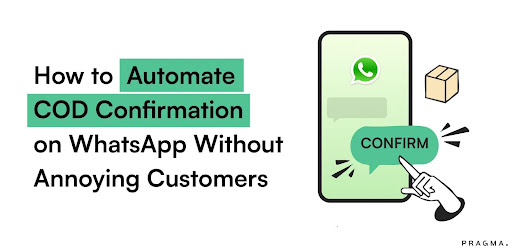What Does It Mean to Be a Lazy Brand?
What if we told you that by being a lazy brand, you could deliver more than just convenience? It's time to reimagine laziness as the art of effortless engagement and discover how it can transform your brand into a powerhouse of Customer ________
The dash could be..
Journey. Support. Retention. Satisfaction. Fulfilment. Etcetera etcetera.
Picture this: a minimalist store, a streamlined checkout process, satisfied customers who barely have to lift a finger… Welcome to the world of Minimalist Excellence in D2C eCommerce.
The Art of Being Lazy 🦥
Being a "lazy" brand isn't about cutting corners; it's about leveraging innovative strategies to craft seamless, frictionless experiences for your audience. It’s about working smarter, not harder, and crafting experiences so effortless that customers don’t have to break a sweat—or even lift a finger.
Here’s how laziness can work in your favour.
1/ The Art of Efficient Automation
Lazy brands know how to leverage automation. By integrating smart tools into your operations, you can reduce repetitive tasks while keeping customers in the loop with personalised, timely, and relevant communication.
In 2023, 58% of D2C brands in India reported a 30% increase in sales after implementing ML-driven marketing automation
BigBasket reduced its response + solution times from an average of one hour to less than 5 minutes after introducing AI-enabled chatbots, resulting in a 20+% increase in customer satisfaction. .
And the advantages of being lazy here is.. You automate + You save ₹
How we do it?

We at Pragma, combined SEGMENTATION & PERSONALISATION to provide HYPER-TARGETED CAMPAIGNS on our WhatsApp Features…
..and received over 12X ROAS (Return on Ad Spend) among our brands.
Especially with our WhatsApp Reminder Feature which brought ₹1,96,110 to one of our brands in a single day, while they spent close to ₹0.

Impact of Automation on Customer Engagement

The goal here is simple—automate customer communications, ensure they’re consistent, and give them a seamless, effortless experience.

Automation Benefits in D2C Brands (Real Data from Indian D2C Market)

2/ The Art of Mobile-first Approach
The advantages of being lazy here is.. You target the NOW (the Gen Z, and soon to be bigger market Gen Alpha) + You save ₹
Lazy customers are glued to their phones, and lazy brands meet them where they are. Your website and app should be optimised for mobile-first functionality to capture the short attention spans of modern consumers.
Did you know that in 2023, 75% of Indian consumers used their mobile devices for D2C purchases, and mobile-optimised websites had 2x lower cart abandonment rates?
Myntra saw great reduction in bounce rate and a 1200% increase in conversion rates with responsive design implementation. By prioritising mobile optimization, brands can reach a wider audience and drive higher engagement and conversions.
Average result of a Responsive Design for Multi-platform Accessibility:


Impact of Mobile Optimization on Bounce Rates (India)
3/ The Art of Optimised Checkout
The advantages of being lazy here is.. You do just the bare necessities, the simplest checkout experience + You save ₹

- Reducing Comprehension Fatigue
A lazy customer wants their transaction to be over in the blink of an eye. An optimised checkout process ensures minimal clicks, fewer form fields, and no unnecessary steps.
A simplified checkout process reduces comprehension fatigue, leading to a significant increase in conversion rates and a substantial decrease in cart abandonment rates.
By simplifying checkout, you can instantly boost conversions. The trick? Make everything as effortless as possible—autofill options, saved payment methods, and fast-load checkout pages.
D2C brands that implemented one-click checkouts saw a 20% boost in conversion rates, especially during high-traffic sales events like Amazon Prime Day.
Effect of Checkout Optimisation

Checkout Optimization Impact on Cart Abandonment

Urban Ladder witnessed a 40+% reduction in cart abandonment and a doubling of conversion rates after implementing a streamlined checkout process, showcasing the power of simplicity in driving results.
Similarly, D2C brand Sugar Cosmetics experienced a 100% increase in average session duration and a 50% decrease in bounce rate after revamping its website with a minimalist design approach. This led to higher customer satisfaction and improved brand perception.

- Advanced Payment Solutions for Seamless Transactions
BigBasket reduced checkout abandonment rate by 66.7% and achieved a 60% improvement in payment processing time with advanced payment solutions. By offering multiple payment options and ensuring security, brands can enhance customer trust and streamline transactions.

4/ The Art of Utilising Data from 500+ Brands
The advantages of being lazy here is.. You learn from other competitors + You save ₹

Lazy brands understand the power of data and are willing to lean on insights gathered from others. Why reinvent the wheel when you can fine-tune it?
By studying customer behaviour, preferences, and trends across the industry, you can create strategies that align with the laziness of your customer base.
Brands that used data insights from other businesses increased their revenue by 25%, as they were able to hyper-personalise their marketing.
Data Utilisation Impact on Personalisation

5/ The Art of Hyper-Targeting
Being lazy means not wasting time on audiences who don’t care. With hyper-targeting, you focus on customers who are already inclined to engage with your brand, increasing the likelihood of conversion.
Indian D2C brands that used hyper targeting saw a 35% uplift in conversion rates, cutting down on unnecessary marketing spend .
Hypertargeting vs. Broad Targeting

6/ The Art of DIY
Customers love doing things themselves, but not if it’s complicated. Lazy brands create easy DIY experiences where customers can manage their returns, track orders, or cancel subscriptions with minimal effort.
In 2022, brands that offered easy DIY return processes reduced return handling time by 40% and increased customer satisfaction by 25% .
DIY Impact on Customer Satisfaction

7/ The Art of Holiday-based Optimisation
Being lazy during peak sales periods, like holidays, means preparing your systems in advance. Brands should use predictive analytics to anticipate high-traffic spikes and optimise their operations accordingly.
Brands that optimised for holiday sales using predictive analytics tools reported 50% less downtime and 35% higher conversion rates during Vinayakar Chaturthi and Diwali.
Holiday Optimisation Impact

8/ The Art of Location-based Optimisation
Lazy customers expect super-fast delivery, but not at any cost. Brands that optimise based on the customer’s location—whether urban or rural—can achieve faster, more cost-effective deliveries.
D2C brands that used location-based delivery optimisation reported a 20% reduction in shipping costs and a 15% increase in delivery speed .
Location-based Delivery Optimisation

9/ The Art of Machine Learning
Machine learning isn’t just for the lazy brand; it’s a necessity. AI helps brands predict demand, understand customer preferences, and even automate mundane tasks like inventory management and customer support.
Brands using machine learning algorithms for demand forecasting improved inventory accuracy by 30% and reduced stock outs by 25% .
Machine Learning Impact on Operations

10/ The Art of Brand-based Optimisation
Lazy customers want brands that just get them. Using customer data, a brand can be optimised for maximum personalisation, offering curated products, tailored emails, and targeted deals that resonate with individual customer needs.
Personalised marketing campaigns resulted in a 50% boost in click-through rates and a 30% increase in revenue for D2C brands.
Brand Optimisation for Personalisation

11/ The Art of Personalised Product Recommendations
Lazy customers love it when brands anticipate their needs. Using AI and machine learning, brands can create tailored experiences that showcase exactly what the customer wants—before they even ask. This personal touch can be a game changer for conversion rates and customer loyalty.
Amazon's recommendation engine is reported to drive up to 35% of total sales, showcasing the power of personalisation.

12/ The Art of Subscription Models
Lazy customers love convenience, and a subscription model offers just that. From weekly groceries to skincare, subscription models create predictable revenue for brands while saving customers the hassle of repetitive purchasing.
The subscription box industry is estimated to be worth $15 billion globally, with 30% of subscription box consumers in India signing up for services like GROWW (for groceries) and CULT.FIT (for fitness).

13/ The Art of Predictive Analytics
Lazy brands rely on data, and predictive analytics allow brands to anticipate customer needs and stock the right products at the right time. This ensures customers always get what they want, when they want it, without encountering stock outs or delays.
Predictive analytics can reduce inventory costs by 20-50%, while boosting sales by 10-20% through better stock management.

14/ The Art of Seamless Omnichannel Experience
Lazy customers expect consistency across every platform they engage with. Brands need to unify their customer experience across multiple channels, ensuring that cart items, preferences, and even service requests are synced.
73% of consumers shop across multiple channels, and omnichannel customers have a 30% higher lifetime value than single-channel shoppers.

15/ The Art of Voice Commerce
Voice assistants like Alexa and Google Assistant are on the rise, and lazy customers are taking full advantage of them. Voice commerce allows customers to place orders, track shipments, or reorder items with simple voice commands, minimising their effort.
Voice commerce is projected to reach $40 billion globally by 2022, with 10% of all eCommerce transactions expected to be voice-based in the next few years.

16/ The Art of Instant Refunds
Refunds are an unavoidable part of eCommerce, but lazy customers want them processed quickly. Offering instant refunds or faster processing times increases trust and customer satisfaction, reducing the friction that comes with returns.
70% of customers are more likely to shop with a retailer again if they receive a fast refund. Brands like Amazon and Zara process refunds within 48 hours to boost customer loyalty.

Conclusion: Lazy Brands, Winning Brands
By being “lazy,” you’re not cutting corners but creating a frictionless, easy-to-navigate customer journey that breeds loyalty. From mobile-first strategies to efficient automation, from machine learning to DIY processes, the art of being a lazy brand is about streamlining the customer experience without losing out on quality.
Customers will never call you lazy—they’ll just call you brilliant.
(Summary of Key Metrics for Lazy Brands)


FAQs (Frequently Asked Questions On Lazy Customers? Be a Lazy Brand)
1. What does it mean to be a "lazy brand" in the Indian D2C space?
Being a lazy brand means creating effortless, frictionless customer experiences by working smarter, not harder. It involves automating repetitive tasks, providing seamless mobile experiences, and simplifying every stage of the customer journey leading to higher satisfaction and loyalty.
2. How does automation benefit lazy brands?
Automation reduces manual workload, delivers personalised, timely communication, improves response times, and boosts engagement. Indian D2C brands using ML-driven marketing automation reported sales increases of 30% and 12X return on ad spend (ROAS) on targeted WhatsApp campaigns.
3. Why is a mobile-first approach key for lazy brands?
With 75% of Indian consumers shopping via mobile, optimising websites and apps for mobile reduces bounce rates and cart abandonment. Myntra achieved a 1200% increase in conversion rates by adopting responsive mobile design.
4. What checkout optimisations are crucial for improving conversions?
Simplifying checkout with fewer steps, autofill options, and multiple popular Indian payment methods can reduce cart abandonment by over 40%. Urban Ladder and Sugar Cosmetics saw significant conversion uplifts after streamlining their checkout processes.
5. How does hyper-targeting improve marketing returns?
Focusing marketing spend on already engaged or likely-to-convert customers increases conversion rates by 35% and reduces wasted spend, as seen among Indian brands adopting hyper-targeted campaigns.
Talk to our experts for a customised solution that can maximise your sales funnel
Book a demo




.png)